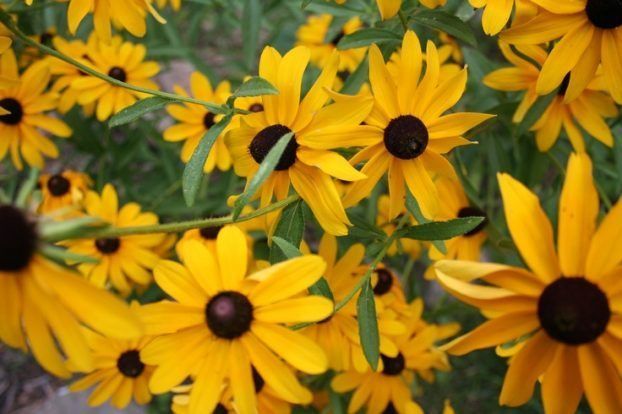SUSTAINABLE LANDSCAPING & NATIVE PLANTS
The use of native plants and native plant communities is becoming increasingly common in sustainable landscaping and native gardening. A native (i.e., indigenous) plant is a plant that has evolved over thousands of years to the particular geography and climate of its region- including that region’s hydrology. Native plant communities include plants that have co-evolved to support each other’s unique characteristics and needs. Furthermore, native plants create habitats for many different wildlife species.
Some benefits of native plants include the following:
Non-native - At Formecology, while we focus on incorporating native plants into our landscape design, we do accommodate the occasional request for non-native plants. In these cases, we use non-invasive species to ensure that these plants do not spread to and negatively affect the surrounding landscape.
Whether you choose a formal or informal planting style, your final natural landscape can still consist of many different plant types, including trees, shrubs, perennials, vines, wildflowers, prairie grasses, etc. With hundreds of plants to choose from, we use our education and experience to pick the most suitable plants for your landscape and lifestyle.
Because of their inherent benefits, we recommend
incorporating native plants in to your landscape design.
Different Planting Styles

Adaptability – Native plants have thrived in the Midwest region for thousands of years, so they are accustomed to growing and surviving even in extreme weather. For example, they will tolerate both spring floods and summer droughts.
Low maintenance – Native plants do not require supplemental water, fertilizer, pesticide treatment or excessive care. Overall, native plants only require minimal attention.
Drought resistance – Due to their long roots, which sometimes span over 15 feet, native plants collect and store rainwater far better than non-native plants or turf grass species. This feature also helps control water run-off and erosion.
Beauty – Native plants provide an interesting backdrop to your landscape and give it aesthetic appeal. Native plants create a beautiful landscape due to their range of sizes, heights, textures and seasonal colors.
Time and cost efficiency – Native landscaping is more time and cost effective than traditional non-native landscaping, requiring far less upkeep, mowing, watering, weeding and replacement, especially when looking out over several years.
Biodiversity – The many different species of native plants, each blooming at different periods during the growing season, create a range of food sources and habitats for wildlife. This encourages different species of birds and insects to take shelter in the foliage and make your landscape their home.
Pollution control – Native plants require carbon to grow; therefore, they remove a significant amount of air pollution. Likewise, because there is no need to mow or trim native plants, you don’t generate pollution with gas-powered lawnmowers and other lawn care equipment.
Native plants can be arranged in formal and informal settings.
Formal - A formal planting is a well-planned, manicured and organized garden. There is a minimal number of native plants used in order to encourage a more uniform look.
Informal - An informal planting is typically based on a larger variety of plant species to create a more random and unpredictable garden.
Eco-friendly sustainable landscaping.
Expertly designed, installed and maintained.
Tell us more about your landscape project!
Throughout our 27 year history, we have been quite different than other landscape design-build companies – we don’t limit ourselves to simply beautifying the landscape.


